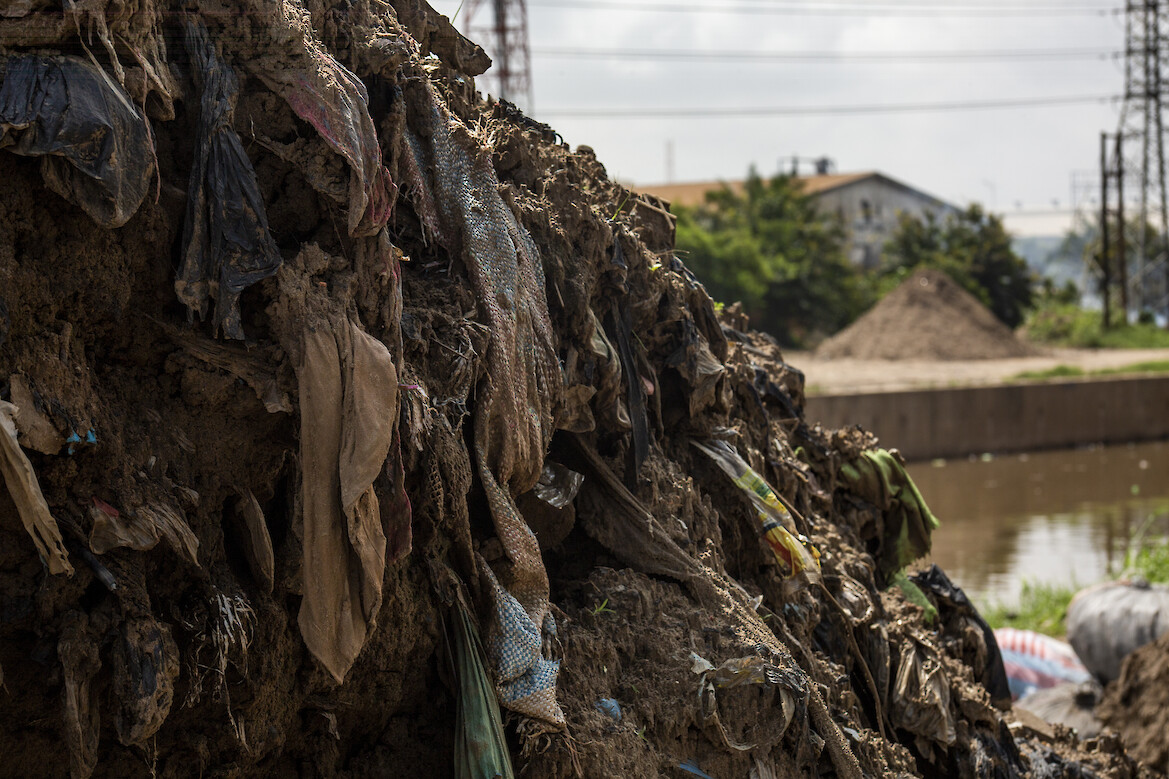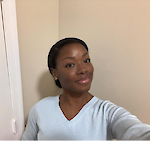The Role of Local Communities in Tackling Global Environmental Issues
Loni Matthew ·Conservation efforts have become highlighted with the incoming changes of ecological issues such as climate change. The emphasis on conservation efforts are mainly directed at governmental bodies that are able to enact legislative change. However, this focus minimizes a very powerful force that is derived from the general public. Governmental bodies take precedence largely due to their dominant positions of societal power and financial resources to enact change. Lots of niche communities that experience relevant ecological changes do not have the platform to spread awareness with the same kind of influence. The direct impact on people within affected communities grant them the perspective to highlight the severity of the ecological issues they are faced with. There is also a stronger level of urgency to those in the community they call home, as opposed to someone collecting data outside of their own community.
To shift this imbalance of influence, incentives to include the general public on high-stakes issues need to take place. The most effective strategies must consider the perspectives of people in affected communities and enact change with their perspectives in mind. Without them, important ecological issues can go unheard and can increase in severity over time.
Current Blind Spots
A strong example of the importance of community input is the ongoing mismanagement of textiles by the Global North. Per the Observatory of Economic Complexity (OEC), 214 million dollars worth of used or previously worn clothing articles from the Global North were shipped to Ghana in 2022 ². A large portion of these textiles meet their final destination packed under coastal sands on Ghanaian beaches and eventually drift out into the Atlantic Ocean. Ironically, efforts to recycle textiles in other countries have contributed to various nuisances once they are received where the issue resurfaces elsewhere. These textiles have created a burden on fishing communities, which have been forced to adapt due to their increasing presence. Once shipped, the source of the textiles from the Global North does not consider both the ecological and economic impacts that are left.

The solution to the overproduction of textiles have been solved by governments within their own respective countries, but simultaneously shift the burden elsewhere. People in communities that have become accustomed to seeing textiles tangled throughout beaches are not given the same priority as governments that are reducing the issue elsewhere. This imbalance of influence seems to sweep ecological issues under the rug, which is harmful for affected communities and, ironically, the environment. The awareness of issues such as these are brought to the public’s attention due to the unavoidable problems they cause to people and the surrounding environment. Since the problem is solved elsewhere, larger governmental bodies do not have the incentive to mitigate any other problems.
How can this gap in communication be addressed?
The prioritization of environmental problems are mainly shaped by international agreements (like the Paris Agreement), scientific research, legislative frameworks and laws, and economic interests. The public opinion tends to rank lower in priority, giving the opinion of affected communities less exposure to their problems. The ways to address this lie in the prioritization of community voices.
Potential Framework
The input of those who have worked alongside various communities and governmental bodies are useful in coming up with future frameworks. Dr. Peter Weingart, a professor at the Institute of Sociology at the University of Bielefeld in Germany, emphasizes the importance of communal input in decision-making. The quality of legislation would improve given more communal involvement “ than just top-down communication from scientific elites; it should also incorporate the local knowledge and perspectives of the affected communities.⁴" Due to the increase in need for community engagement, research is continuously being done to assess how previous studies failed to highlight them, and what can be done moving forward. Dr. Weingart’s work observed a large uptick of the word “engagement” across publications by 3 reputable journals.

To integrate communal perspectives into decision-making, the following can be done:
- “Town hall” sessions between governmental bodies and affected communities
- Project proposals for unaddressed ecological issues within communities
- Citizen science initiatives
Town hall sessions can be held between people in affected communities and people within governmental bodies. The community members’ direct connection to ecological issues create a clearer understanding of why these problems are negatively impactful if they go unaddressed. This can be followed by project proposals, where potential ideas on how to address these issues are created by both community members and governmental bodies. This is where the allocation of funds and resources can be discussed and decided for future action to take place. Alongside decision-making efforts, citizen science projects can also take place, where community members collect data to report and share with legislative officials.
Community-led Science

There are a countless number of prominent stories in community-led science. One of such is the Flint Water study in Flint, Michigan. In 2014, the citizens of Flint were exposed to dangerously high amounts of lead⁵. The community collaborated with researchers to collect water samples. This led to the allocation of 600 million dollars in relief funding by the US Federal government ⁶. The urgency and initiative behind this project were due to the real-life consequences that were being enacted on the community. As the driving force behind the urgency, the community in Flint thrust a seemingly local issue into the general consciousness on a national scale.
Giving affected communities the platform to express the current environmental challenges exacts results. Stories like in Flint, Michigan, and on the Ghanaian coast show a direct link between the cause-and-effect that is caused by community voices. The collaboration between governmental bodies and local communities will continue to tackle environmental issues with increased efficiency and impact.
References
- Christine King, Margaret Cruickshank, Building capacity to engage: community engagement or government engagement?, Community Development Journal, Volume 47, Issue 1, January 2012, Pages 5–28, https://doi-org.proxy-um.researchport.umd.edu/10.1093/cdj/bsq018
- OEC. (n.d.). Used Clothing. Observatory of Economic Complexity. Retrieved from https://oec.world/en/profile/hs/used-clothing.
- Tetteh, Y. Y. K. (2023, June 5). How Ghana became fast fashion’s dumping ground. The Guardian.https://amp.theguardian.com/global-development/2023/jun/05/yvette-yaa-konadu-tetteh-how-ghana-became-fast-fashions-dumping-ground.
- Weingart, P. (2020). Public engagement with science—Origins, motives, and impact in academic literature and science policy. Science and Public Policy, 47(5), 653–662. https://doi.org/10.1371/journal.pone.0306474
- Ruckart, Perri Zeitz MPH; Ettinger, Adrienne S. ScD, MPH, MS; Hanna-Attisha, Mona MD, MPH; Jones, Nicole PhD; Davis, Stephanie I. MSPH; Breysse, Patrick N. PhD. The Flint Water Crisis: A Coordinated Public Health Emergency Response and Recovery Initiative. Journal of Public Health Management and Practice 25():p S84-S90, January/February 2019. | DOI: 10.1097/PHH.0000000000000871
- Roy, S. and Edwards, M. (2019) ‘Citizen Science During the Flint, Michigan Federal Water Emergency: Ethical Dilemmas and Lessons Learned’, <i>Citizen Science: Theory and Practice</i>, 4(1), p. 12. Available at: https://doi.org/10.5334/cstp.154.
About the author
Loni Matthew

Loni is a master’s student studying microplastics at UMCES. Her research focuses on the distribution and trajectory of microplastic particles within bodies of water using computer modeling systems.
Next Post > When the Going Gets Tough: How Communities of All Sizes Bounce Back from Disasters
Comments
-
Alison Novara 1 year ago
Loni, great blog! I really loved how you focused a lot on the solutions and how we can move forward with this issue. I also really liked that you didn't get lost in what the issue was. You gave a great description of it, and included a great case study, but then the strong focus on what people are doing about the issue and globally what can be done was fantastic and I learned a lot. Great job!
-
Anikka 1 year ago
Loni, great blog! I especially enjoyed your points about prioritizing community voices and relaying them to the national and international level. Nice work.
-
Ronita 1 year ago
Loni, your blog effectively provides a comprehensive discussion on the pivotal role of local communities in addressing global environmental issues. Good job!
-
Adetutu Adebayo 1 year ago
The message is clearly communicated. Thank you for the post, Loni. Effective communication helps in achieving the goals faster.
-
Ian K 1 year ago
Great blog! it highlights an often overlooked aspect of conservation efforts: the immense potential of empowering affected communities to influence ecological solutions. By showcasing real-world examples like Ghana's textile burden and Flint, Michigan’s water crisis, the piece effectively emphasizes how community-driven initiatives and citizen science can expose hidden environmental injustices and drive tangible change. The call for integrating grassroots perspectives with governmental efforts offers a compelling framework for closing communication gaps and fostering equitable, sustainable environmental action. It’s a powerful reminder that true conservation success hinges on shared responsibility and inclusion.
-
Taylor Breton 1 year ago
Great Blog Loni! I thought that the graph you included on when the term engagement was used in publications was so interesting, especially seeing an increase around 2013.
-
İngilizcemi 1 year ago
Loni, your blog is absolutely fantastic! I particularly appreciated how you emphasized the importance of amplifying community voices and ensuring they reach broader national and international platforms. It’s truly inspiring to see such thoughtful and impactful work. Keep it up!

